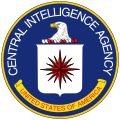References
- ↑ Central Intelligence Agency (11 December 1950), National Intelligence Estimate NIE-15: Probable Soviet Moves to Exploit the Present Situation
- ↑ "CIA Intelligence Report, Intelligence on the Soviet Bloc" (PDF), CIA's Analysis Of The Soviet Union, 1947-1991, Central Intelligence Agency, March 1953, archived from the original (PDF) on 2008-05-14, retrieved 2008-04-28
- ↑ "Soviet Capabilities and Probable Courses of Action Through Mid-1959" (PDF), NIE 11-4-54: CIA's Analysis Of The Soviet Union, 1947-1991, Central Intelligence Agency, September 1954, archived from the original (PDF) on 2008-05-14, retrieved 2008-04-28
- ↑ Guatemala, CIA FOIA Reading Room, archived from the original on 2008-04-18, retrieved 2008-04-28
- ↑ Doolittle, James (30 September 1954), Report on the Covert Activities of the Central Intelligence Agency, archived from the original on 1 May 2008 There is no direct link. At the CIA FOIA reading room page, search on COVERT OPERATIONS
- ↑ "Special National Intelligence Estimate 11-8-5: Implications of Current Soviet Conduct", Foreign Relations of the United States, X, Part 1, FRUS, 1958-60: E. Europe Region, Soviet Union, Cyprus, July 8, 1958, archived from the original on July 6, 2008, retrieved April 28, 2008
- ↑ snie11-8-5
- ↑ "INTERVIEW WITH SANDY GRIMES", The National Security Archive, CNN, January 30, 1998
- ↑ National Intelligence Estimate 11-5-59: Soviet Capabilities in Guided Missiles and Space Vehicles (PDF), archived from the original (PDF) on February 27, 2008
- 1 2 3 Memorandum for the 303 Committee: United States Government Support of Covert Action Directed at the Soviet Union (PDF), vol. Foreign Relations of the United States, 1969–1976, Volume XII, Washington, December 9, 1969, FRUS XII-103
{{citation}}: CS1 maint: location missing publisher (link) - ↑ NSC 5502/1, "Statement on U.S. Policy Toward Russian Anti-Soviet Political Activities,", vol. Foreign Relations of the United States, 1955–1957, vol. XXIV, Soviet Union, Eastern Mediterranean, Document 3.
- ↑ "Special Statements Regarding the U - 2 Incident and the Recent Military Test Alert (NSC Action No. 2231)", Foreign Relations of the United States, X, Part 1, FRUS, 1958-60: E. Europe Region, Soviet Union, Cyprus, May 25, 1950, archived from the original on July 20, 2008, retrieved April 28, 2008
- ↑ "Bipartisan Leaders Breakfast with the President", Foreign Relations of the United States, X, Part 1, FRUS, 1958-60: E. Europe Region, Soviet Union, Cyprus, May 25, 1950, archived from the original on July 20, 2008, retrieved April 28, 2008
- ↑ Bohlen, Charles (July 8, 1960), "Memorandum of Conversation with [Soviet] Ambassador Menshikov", Foreign Relations of the United States, X, Part 1, FRUS, 1958-60: E. Europe Region, Soviet Union, Cyprus, archived from the original on July 20, 2008, retrieved April 28, 2008
- ↑ Interagency Intelligence Memorandum (November 1975), Soviet Dependence on Space Systems (PDF)
- ↑ "SNIE 11/2-81: Soviet Support for International Terrorism and Revolutionary Violence" (PDF), CIA's Analysis Of The Soviet Union, 1947-1991, Central Intelligence Agency, May 1981, archived from the original (PDF) on 2008-05-14, retrieved 2008-04-28
- ↑ David E. Hoffman (February 27, 2004), "CIA slipped bugs to Soviets – Memoir recounts Cold War technological sabotage", MSNBC , archived from the original on February 29, 2004, retrieved 2007-07-20
- ↑ "October 1984: CIA Director Secretly Visits Afghan Training Camps; He Urges Spread of Violence into Soviet Union", Center for Grassroots Oversight ("CGO"), Cooperative Research History Commons, archived from the original on 2008-04-13, retrieved 2008-04-28
- ↑ Coll, Steve (2005), Ghost Wars, Penguin, pp. 104–105, ISBN 1-59420-007-6
- ↑ Pervez Hoodbhoy (17–21 July 2003). "Afghanistan and the Genesis of Global Jihad". 53rd Pugwash Conference on Science and World Affairs: Advancing Human Security: The Role of Technology and Politics. Archived from the original on 2006-10-10.
